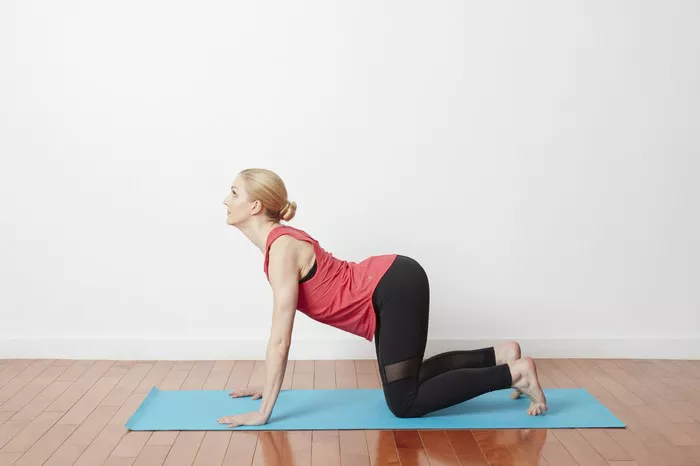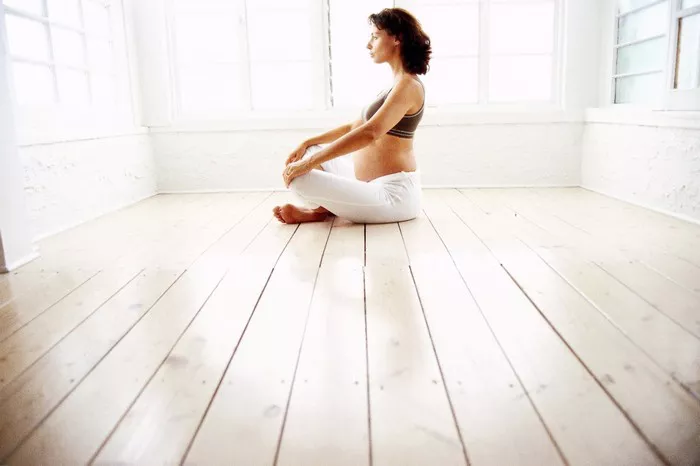High blood pressure, also known as hypertension, is a common health condition affecting millions of people worldwide. It occurs when the force of the blood against the artery walls is consistently too high, leading to an increased risk of heart disease, stroke, and other health issues. Managing high blood pressure often involves a combination of medication, dietary changes, and lifestyle modifications. One effective way to help manage and lower blood pressure naturally is through the practice of yoga.
Yoga is an ancient practice that combines physical postures, breathing exercises, and meditation to promote overall well-being. Many yoga poses are specifically designed to relax the body, reduce stress, and enhance circulation, which can help in lowering blood pressure. In this article, we will explore various yoga poses that are particularly beneficial for individuals with high blood pressure. These poses are gentle and restorative, focusing on relaxation, deep breathing, and stretching to promote a healthy cardiovascular system.
Understanding High Blood Pressure and Yoga
Before diving into specific yoga poses, it’s important to understand how yoga can benefit individuals with high blood pressure. Yoga promotes relaxation and reduces stress, both of which are essential for managing blood pressure. Stress and anxiety are known to elevate blood pressure levels, and by practicing yoga regularly, you can help lower these stress levels and create a sense of calm.
Moreover, yoga helps improve circulation, which is beneficial for heart health. Certain poses encourage blood flow to different parts of the body, reducing the workload on the heart and helping to normalize blood pressure levels. In addition, yoga promotes mindful breathing, which can help lower blood pressure by calming the nervous system and reducing the heart rate.
Yoga Poses for High Blood Pressure
Here are some yoga poses that are particularly effective for managing high blood pressure. These poses are gentle and focus on relaxation, stretching, and deep breathing.
1. Child’s Pose (Balasana)
Child’s Pose is a restful pose that helps relax the body and mind. It gently stretches the lower back and hips, promoting relaxation and reducing stress.
How to Do It:
Kneel on the mat with your big toes touching and knees spread apart to a comfortable distance.
Sit back on your heels and extend your arms forward, bringing your chest down towards the mat.
Rest your forehead on the mat and relax your neck and shoulders.
Hold the pose for 1-3 minutes, breathing deeply and focusing on relaxing the body with each exhale.
Benefits: Child’s Pose helps calm the nervous system, reduces stress, and promotes relaxation, which can help lower blood pressure.
2. Legs Up the Wall Pose (Viparita Karani)
Legs Up the Wall Pose is a restorative pose that promotes relaxation and improves circulation. This pose allows gravity to assist in the return of blood to the heart, reducing the workload on the heart and promoting a calming effect.
How to Do It:
Sit next to a wall with your hips as close to the wall as possible.
Lie back and extend your legs up the wall, keeping them straight and relaxed.
Place your arms alongside your body, palms facing up.
Close your eyes and hold the pose for 5-10 minutes, breathing deeply and relaxing into the pose.
Benefits: This pose promotes relaxation, reduces stress, and improves circulation, all of which can help lower blood pressure.
3. Cat-Cow Pose (Marjaryasana-Bitilasana)
Cat-Cow Pose is a gentle, flowing sequence that warms up the spine and promotes relaxation. It helps release tension in the back and shoulders, promoting a sense of calm.
How to Do It:
Start on your hands and knees in a tabletop position, with your wrists aligned under your shoulders and knees under your hips.
Inhale and arch your back, lifting your tailbone and head towards the ceiling (Cow Pose).
Exhale and round your spine, tucking your chin to your chest and drawing your belly button towards your spine (Cat Pose).
Continue flowing between these two poses for 5-10 breaths, synchronizing your movements with your breath.
Benefits: This sequence helps release tension in the back and shoulders, promotes relaxation, and calms the mind, which can help lower blood pressure.
See also: Yoga Pose: Cat-Cow Pose (Marjaryasana-Bitilasana)
4. Seated Forward Bend (Paschimottanasana)
Seated Forward Bend is a calming pose that stretches the spine and hamstrings while promoting relaxation. It helps reduce stress and anxiety, which can contribute to lowering blood pressure.
How to Do It:
Sit on the mat with your legs extended straight in front of you and your back straight.
Inhale and lengthen your spine, reaching your arms overhead.
Exhale and hinge forward at the hips, reaching for your feet or shins.
Keep your back straight and focus on lengthening the spine rather than rounding it.
Hold the pose for 1-2 minutes, breathing deeply and relaxing into the stretch.
Benefits: This pose helps calm the mind, reduce stress, and promote relaxation, which can help lower blood pressure.
5. Reclining Bound Angle Pose (Supta Baddha Konasana)
Reclining Bound Angle Pose is a restorative hip opener that promotes relaxation and stretches the inner thighs and groin. It helps calm the nervous system and reduce stress.
How to Do It:
Lie on your back with your knees bent and feet flat on the mat.
Bring the soles of your feet together and allow your knees to fall open to the sides, creating a diamond
shape with your legs.
Place your arms alongside your body or rest them on your belly.
Hold the pose for 2-5 minutes, breathing deeply and allowing your body to relax.
Benefits: This pose promotes relaxation, reduces stress, and calms the nervous system, which can help lower blood pressure.
6. Supported Bridge Pose (Setu Bandhasana)
Supported Bridge Pose is a gentle backbend that opens the chest and stretches the spine. When practiced with support, it promotes relaxation and reduces stress.
How to Do It:
Lie on your back with your knees bent and feet hip-width apart.
Press your feet into the mat and lift your hips towards the ceiling, placing a block or bolster under your sacrum for support.
Rest your arms alongside your body and relax into the pose.
Hold the pose for 1-3 minutes, breathing deeply and relaxing with each exhale.
Benefits: This pose helps open the chest, promote relaxation, and reduce stress, which can help lower blood pressure.
7. Corpse Pose (Savasana)
Corpse Pose is the ultimate relaxation pose, helping to calm the mind and relax the body completely. It’s an essential pose for reducing stress and promoting overall relaxation.
How to Do It:
Lie on your back with your legs extended and arms resting alongside your body, palms facing up.
Close your eyes and take slow, deep breaths, allowing your body to relax completely.
Focus on releasing tension from each part of your body, starting from your toes and working your way up to your head.
Hold the pose for 5-10 minutes, breathing deeply and relaxing with each exhale.
Benefits: This pose promotes deep relaxation, reduces stress, and calms the mind, which can help lower blood pressure.
Tips for Practicing Yoga with High Blood Pressure
When practicing yoga with high blood pressure, it’s essential to keep a few key tips in mind:
Avoid Inversions: Poses where the head is below the heart, such as headstands or shoulder stands, can increase blood pressure. Stick to gentle, restorative poses instead.
Focus on Breathing: Deep, mindful breathing is crucial for relaxation and reducing stress. Focus on slow, controlled breaths throughout your practice.
Listen to Your Body: Never push yourself into a pose or force a stretch. Listen to your body and work within your limits to avoid overexertion.
Use Props: Props like blocks, bolsters, and straps can help support your practice and make poses more accessible, especially if you’re experiencing tightness or discomfort.
Practice Regularly: Consistency is key when it comes to managing high blood pressure. Aim to practice these poses regularly to see the best results.
Conclusion
Yoga poses for high blood pressure can provide significant benefits for managing this common health condition. By incorporating these gentle, restorative poses into your regular practice, you’ll be able to promote relaxation, reduce stress, and enhance circulation, all of which can help lower blood pressure naturally. Remember to listen to your body, practice mindfully, and enjoy the journey towards a healthier, more balanced self.
Related topics:



















